User documentation is the unsung hero of the SaaS business model.
This resource is incredibly helpful to your users who want to learn how to use your product or are experiencing issues with it because it provides them with instant guidance and assistance without draining your budget.
And since user documentation is becoming a key element in the marketing and sales strategies of SaaS companies, it’s something your SaaS product really shouldn’t do without.
In this article, we’re bringing you nine beautifully designed and well-organized examples of user documentation you can learn from when building your own user knowledge base.
Read on to get inspired and find new ways to help your users!
Ahrefs Help Center
Ahrefs’ user documentation includes a handy search bar as the focal point, which allows visitors to find what they need quickly and easily, simply by entering their query and hitting enter.
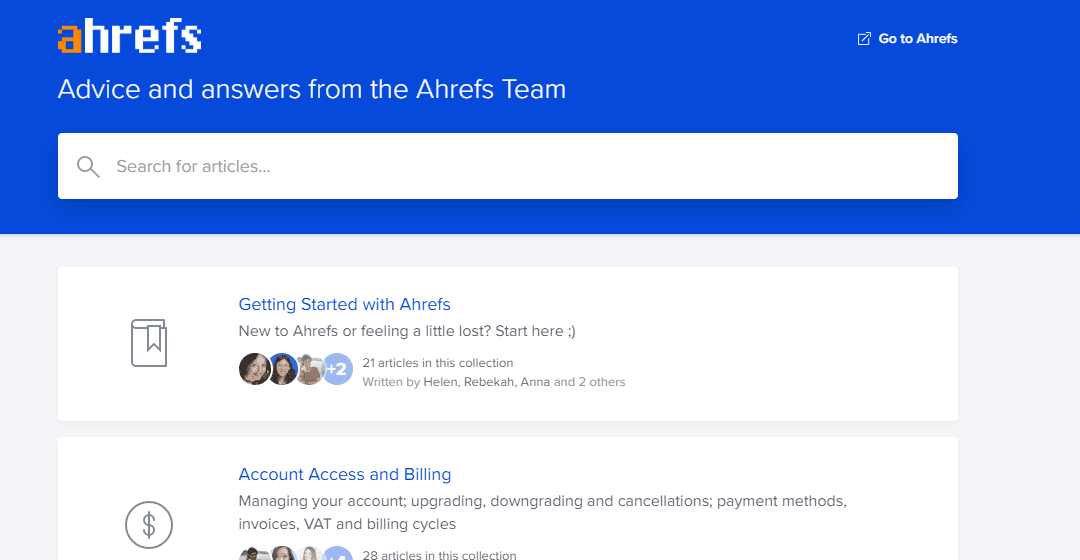
Source: help.ahrefs
This is a great way to organize your help documentation because users usually don’t consume this kind of resource in a linear way.
Rather, they access the documentation when they have a specific question or concrete issue they need to solve.
Allowing them to access the information they need right away, instead of wading through a lot of literature, will definitely be appreciated.
Nevertheless, this knowledge base also offers an overview of the available documentation by dividing it into collections by topic.
The first collection features a getting started guide, which is smart because many users will access the knowledge base to find precisely this information when they’re first starting to work with Ahrefs.
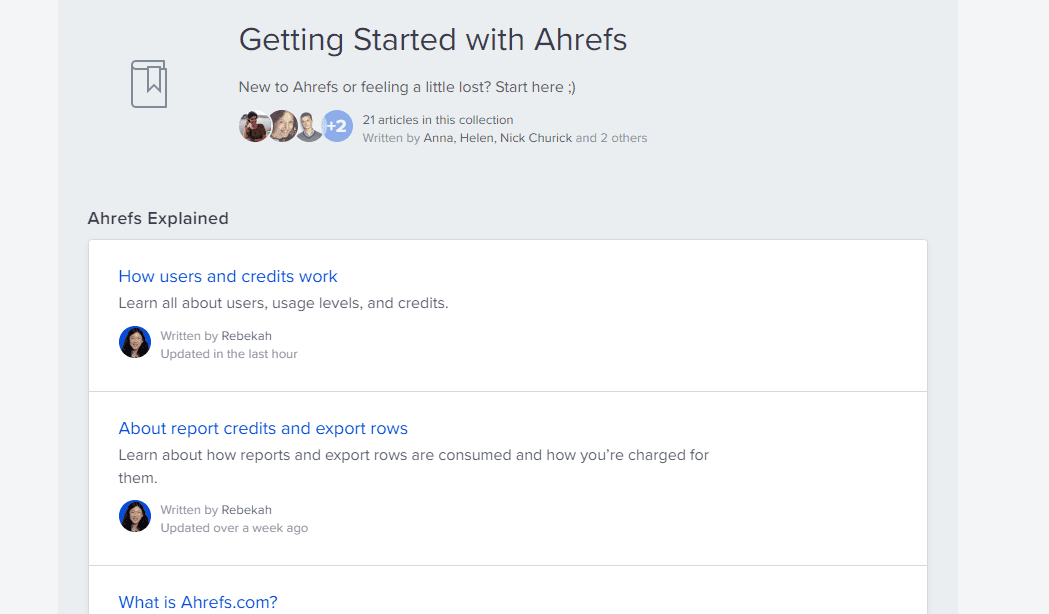
Source: help.ahrefs
By having a search bar and a neatly organized collection of topics, Ahrefs manages to cover every user intention in an efficient way: from tackling specific issues to exploring the product in a more unstructured way.
Archbee Help Center
This user knowledge base is an example of documentation rich with possibilities and interactive features.
It does a great job showcasing everything Archbee, the documentation software, can do to please incoming users and help documentation providers provide the best possible service.
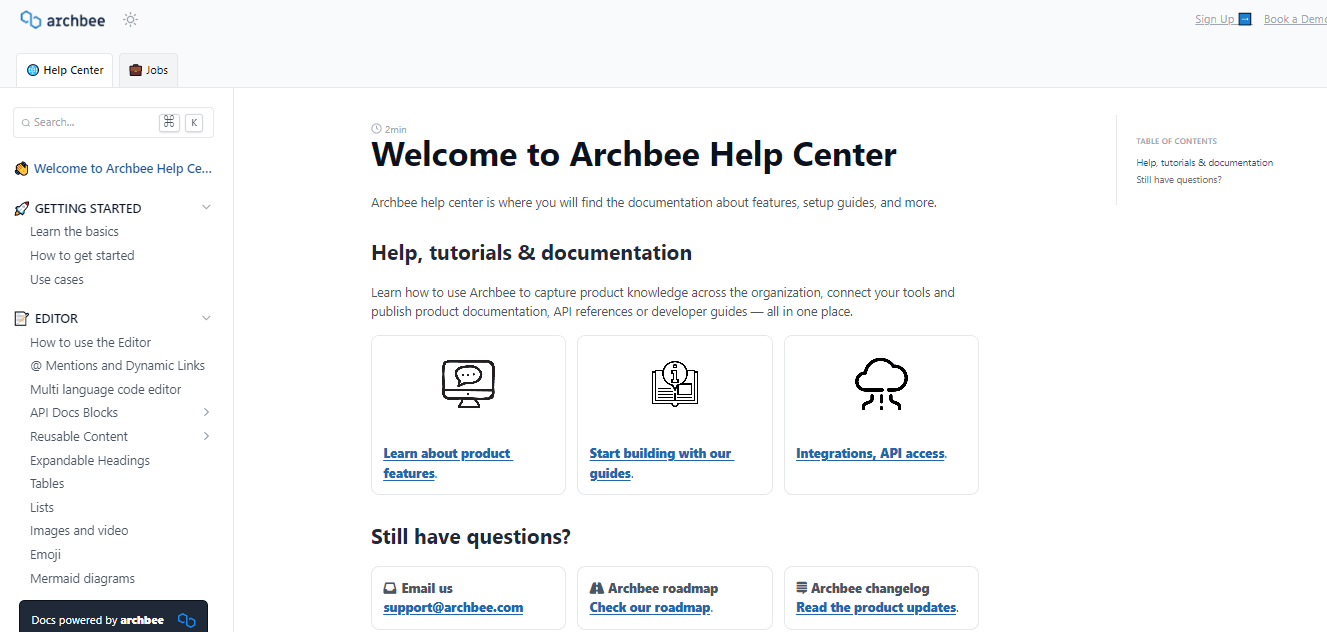
Source: Archbee
Upon arrival, visitors are met with several options to get started (the “About”, “Start building”, and “Integrations and API access” sections).
For users who need further assistance, there are contact channels below, which is a great way to combine customer support with documentation.
The navigational menu on the left side provides a list of categories where users can browse topics, as well as a search bar.
On the right-hand side, another menu enables easier navigation within the current document.
Finally, the feedback feature at the bottom of the page allows users to have their voices heard by simply clicking “yes” or “no” to tell the documentation provider if they found the article useful.

Source: Archbee
Many documentation providers like to keep things simple to avoid confusing users browsing the knowledge base.
Archbee takes a different approach by providing every feature imaginable and supporting users throughout their visit to the user documentation.
Netflix Help Center
Netflix’s Help Center is a great example of how your user documentation can serve other purposes in addition to helping your existing users solve issues.
Specifically, this help center also fulfills an important role in capturing and converting leads, meaning it has a marketing function as well as a customer service role.
In practice, that means that Netflix uses prominently positioned call to action (CTA) buttons to motivate users to sign up for the streaming service.
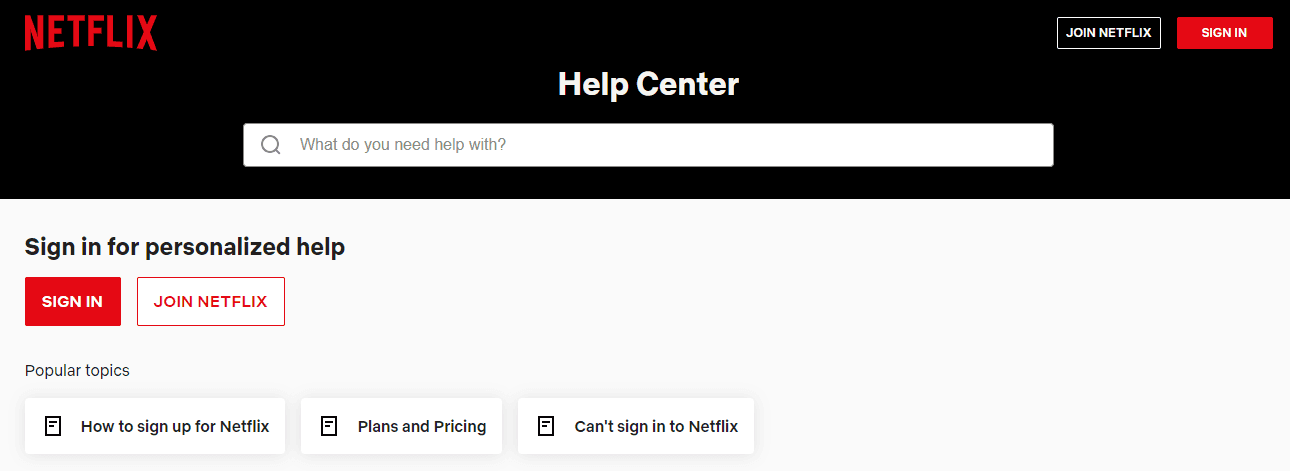
Source: help.netflix
As you can see, the articles about signups and account management are also featured at the top of the base.
This is a great strategy to promote company growth in addition to providing useful documentation to users.
Of course, the other elements you would expect from a user documentation platform are also present.
The search bar can be found at the top of the page, ready to transport visitors to the content they need.
An interesting thing to note here is the way the help categories are formatted. Each category has a collection of articles generated as common user issues and questions.

Source: help.netflix
Netflix is a fine example of a multi-purpose user documentation platform that does a great job helping existing users as well as attracting new ones by providing helpful content for both kinds of visitors.
Slack Help Center
The ubiquitous communication app Slack leverages its recognizable visual identity to make its user documentation engaging and even fun to use.
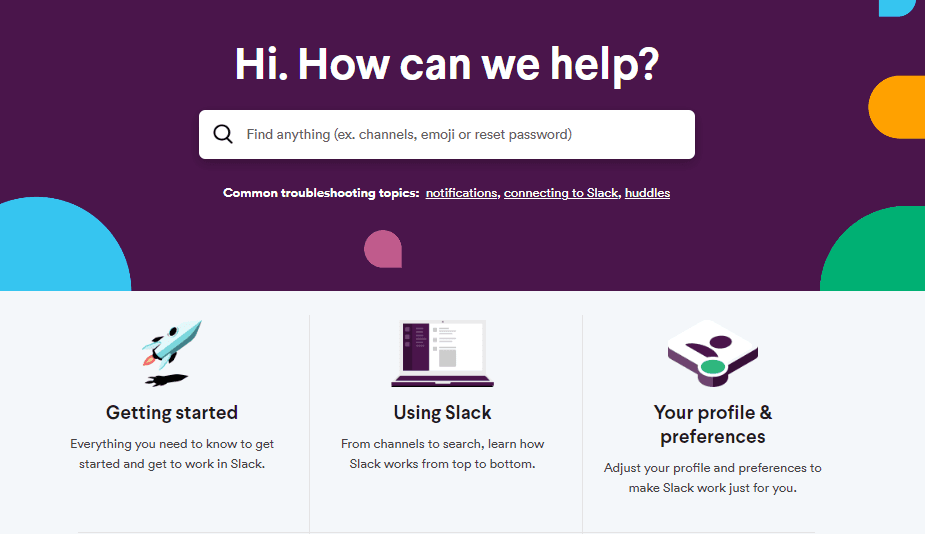
Source: Slack
This upbeat approach is actually a very progressive take on user documentation.
All too often, companies fail to realize that user documentation is an essential part of their communication with customers and opt for a very dry writing style, which dooms users to reading boring pages of technical language to find the answers they seek.
Slack, however, pulls out all the stops to help users connect with their brand and internalize how the app works easily.
Apart from the strong visual experience, Slack offers highly interactive articles with navigation menus and tabs that allow users to effortlessly move through the knowledge base.
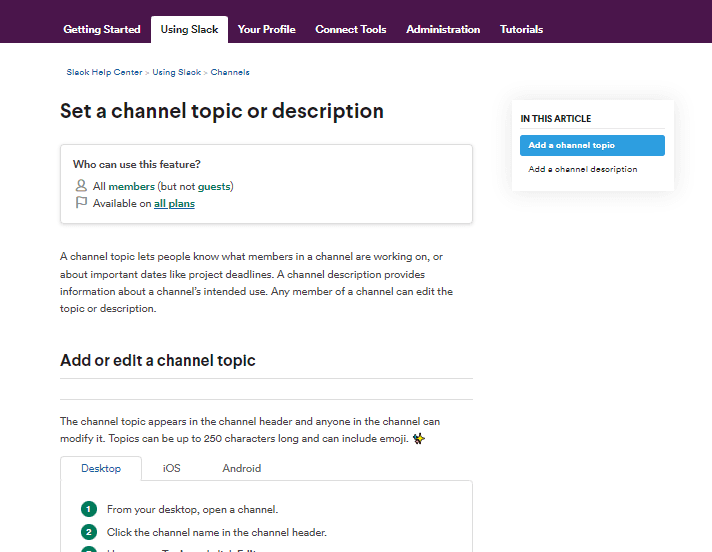
Source: Slack
The copy is simple and uses plain language to deliver instructions efficiently, and features tips and tricks to elevate the user’s user’s experience and help them accomplish more with the app.
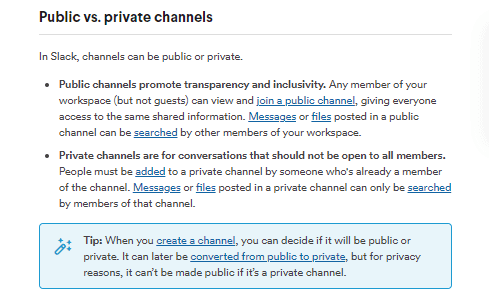
Source: Slack
In today’s technical writing practices, black-and-white user guides with dry instructions are out, and colorful, engaging user documentation is in. Slack is a true example of that.
Stripe: Help & Support
Stripe, the payment processing platform, is quite famous for its no-fuss, neat and clean approach to documentation.
Developers especially enjoy their expertly written, clearly presented API documentation.

Source: Kevin Naughton Jr. on Twitter
Their help documentation takes a similar approach. Users are met with a search bar and a collection of commonly accessed articles to make information retrieval as quick as possible.
On the right-hand side, there’s also a list of topics so that users can explore the knowledge base and all it has to offer.
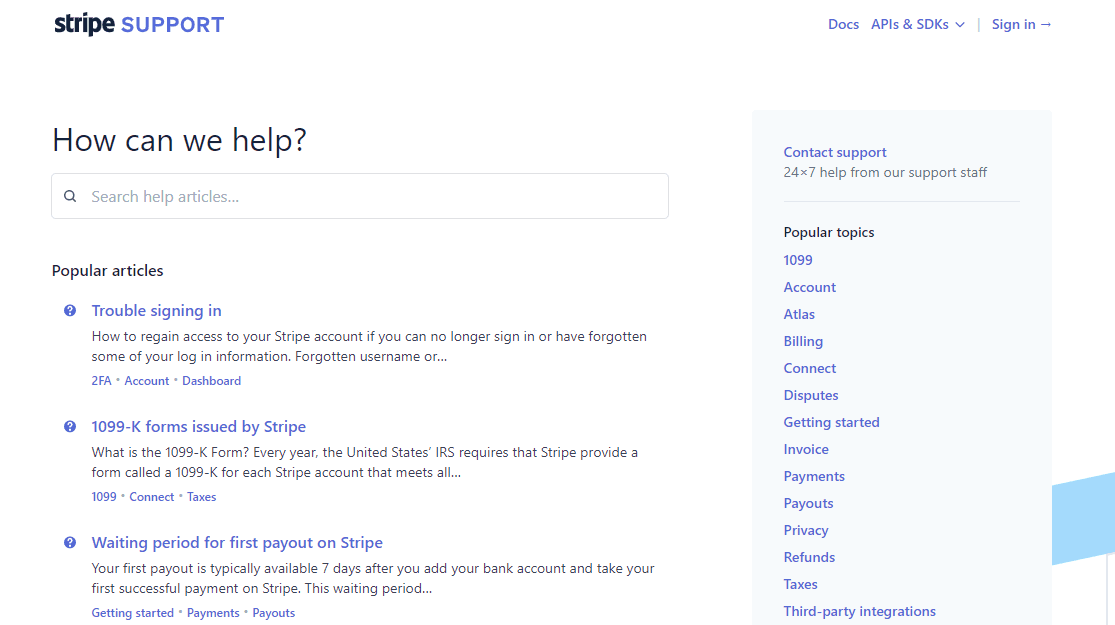
Source: support.stripe
Notice the first element to appear at the top of the navigational menu.
It’s a link for contacting Stripe’s 24/7 customer support staff, which is another example of combining self-service and agent-based support to ensure that no customer issue goes unsolved, a great practice to follow.
The documents themselves have an interesting structure.
Every article covers one topic that concerns the usage of the product and tackles it by providing every bit of information available on the subject.
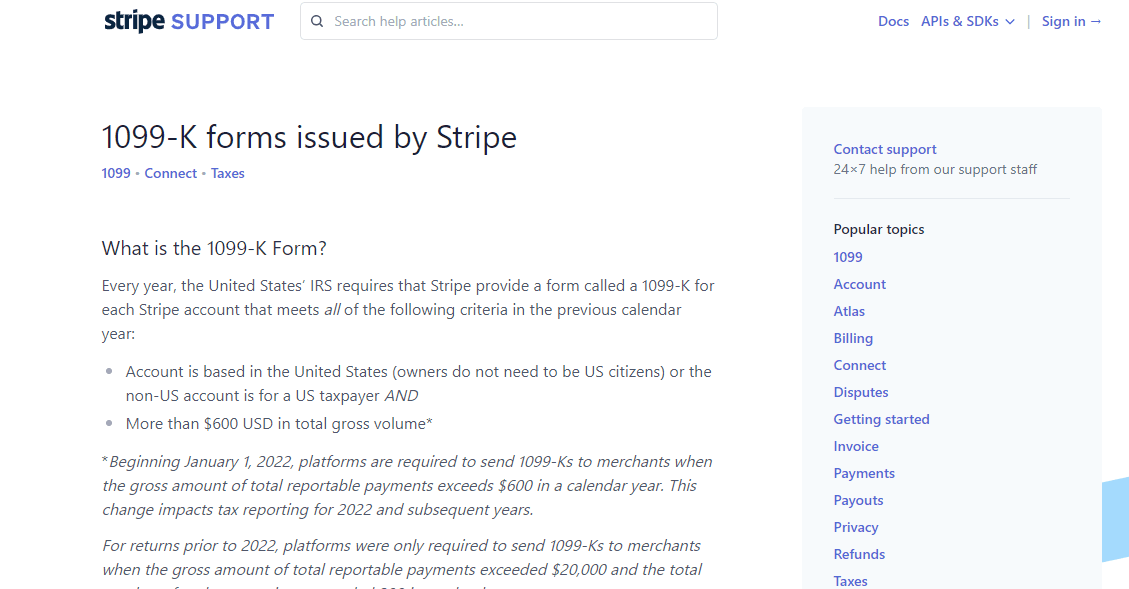
Source: support.stripe
Right under the title, users can see which categories (topics) this article is related to, and there’s more recommended reading to be found at the bottom of the article.
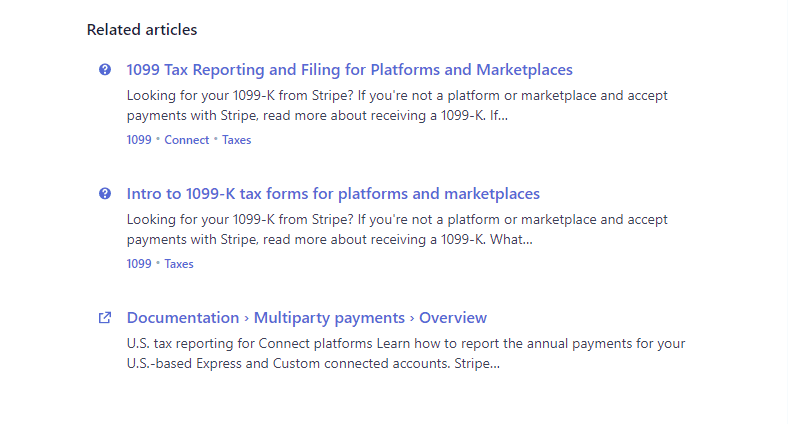
Source: support.stripe
In contrast to Slack’s colorful and engaging approach to user documentation, Stripe is an example of a more focused knowledge base that prioritizes exhaustive information and quick navigation over everything else.
Twilio Help Center
Twilio is similar to Stripe in that they both offer complex software products that require a higher level of technical expertise to implement and manage.
Therefore, it’s no surprise that their user documentation looks similar and a lot different from that of an app meant for wider consumption, such as Slack.
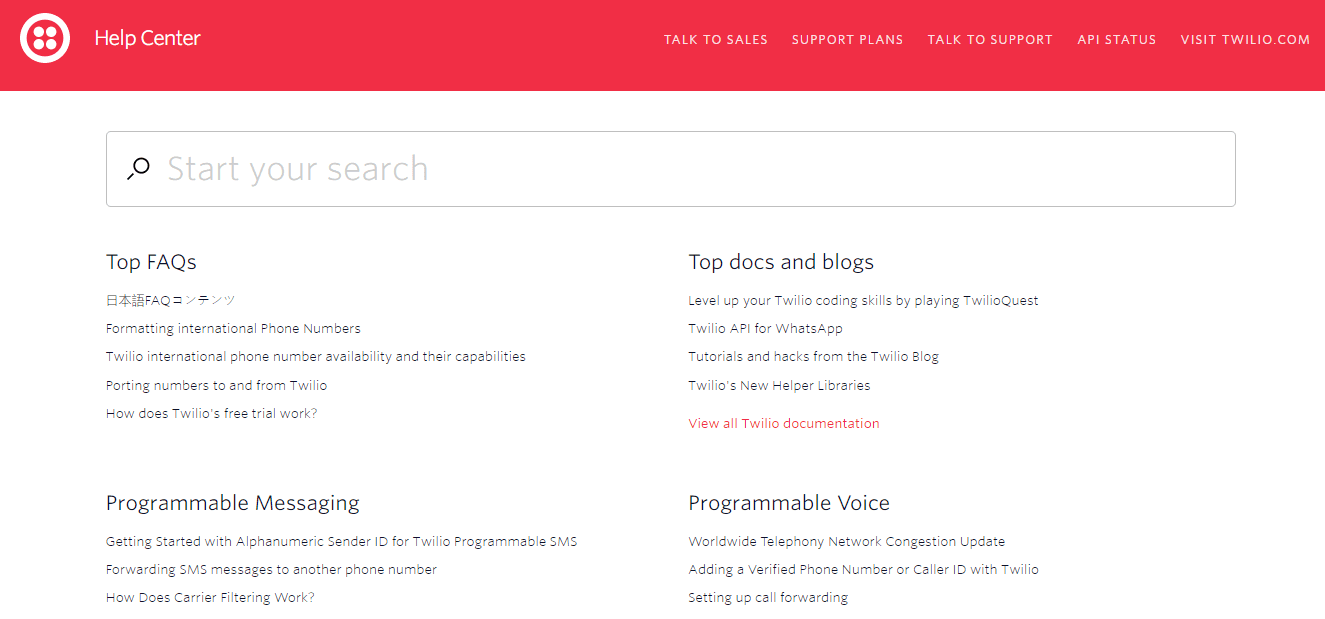
Source: support.twilio
So, here we once again have a clean look with a search bar taking center stage.
The articles are organized under categories and provide solutions to the most common questions users might have when accessing the documentation.
One subtle difference can be found at the top of the categories list in the “Top docs and blogs” section.
Here, users can find links to educational content that will expand their knowledge of the product and help them use it in advanced ways.
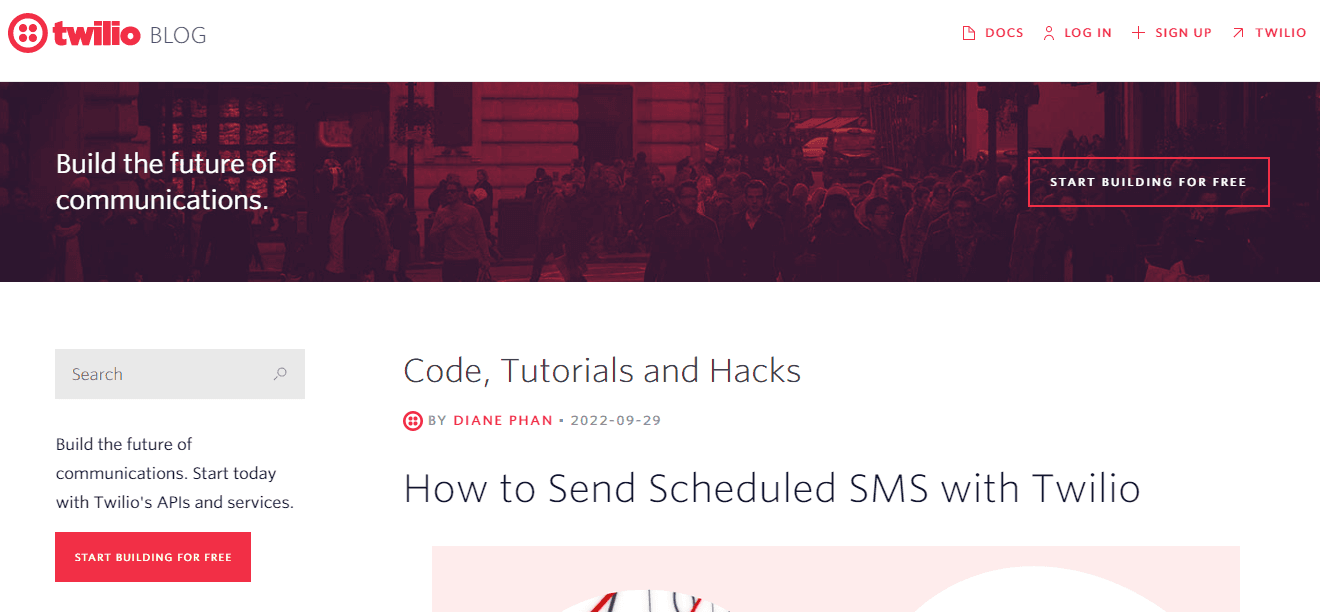
Source: Twilio
Connecting your user documentation to your blog is a great idea because it motivates users to access your content not just to fix issues and learn the basics but also to become proficient at using your product and accomplish things they didn’t even know they could do with your software.
Typeform Help Center
There is a lot to like with the user documentation of Typeform, the form and survey builder software.
For example, it’s interesting to note that the user documentation landing page features a “Trending Topics” section.
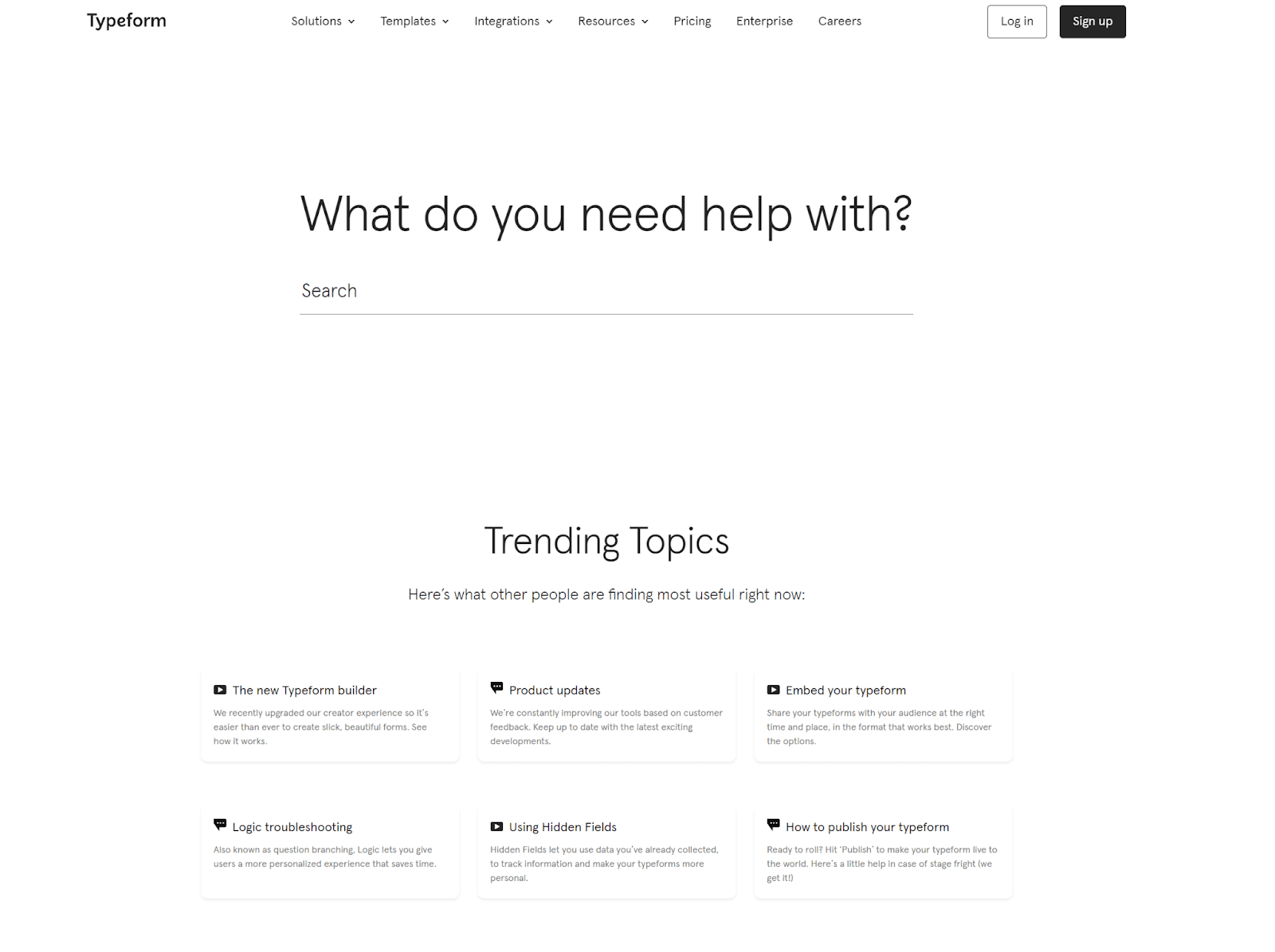
Source: Typeform
The trending topics approach is a smart one because it puts users at the forefront of the knowledge base.
When accessing the documentation, people can get a clear overview of what other users are doing with Typeform and get inspired to learn new things and expand their use of the product.
For example, the current trends include an introduction to the new Typeform builder and a tutorial for using hidden fields.
Users who haven’t yet used these features might be motivated to access them after seeing that other users are finding them useful enough to make them trend within the knowledge base.
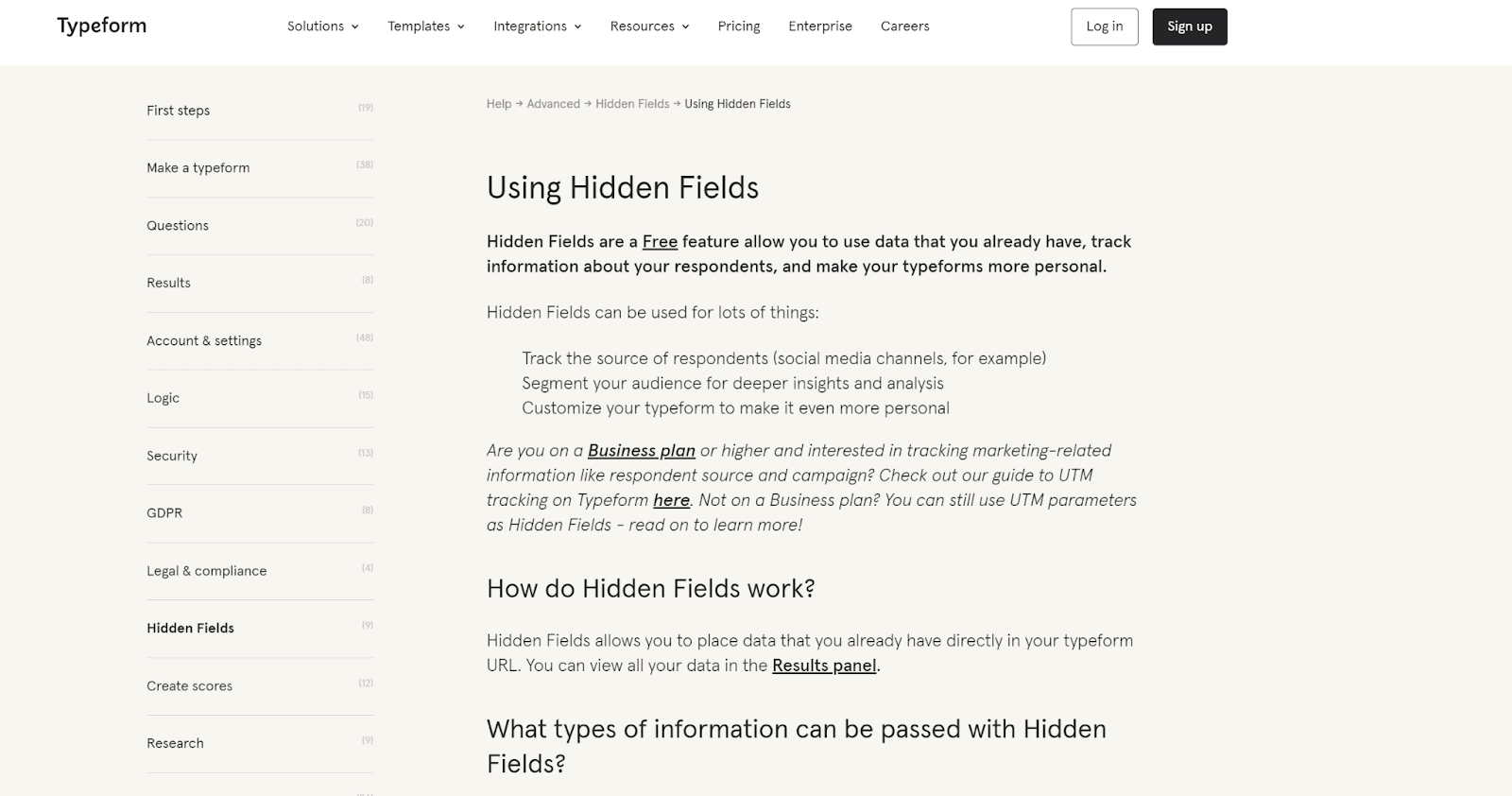
Source: Typeform
Bear in mind that your users should always guide your documentation efforts.
So if a large number of your users is accessing certain articles in your knowledge base, it’s a good idea to let others know that these parts of your knowledge base are especially valuable and worth their time.
Providing a “Trending Topics” section is definitely a good way of doing that, so see if you can provide something similar within your own knowledge base.
Whatfix—Support
Whatfix shows us a good example of user documentation that leverages formats other than plain text to ensure an efficient, pleasant, and engaging learning experience for users.
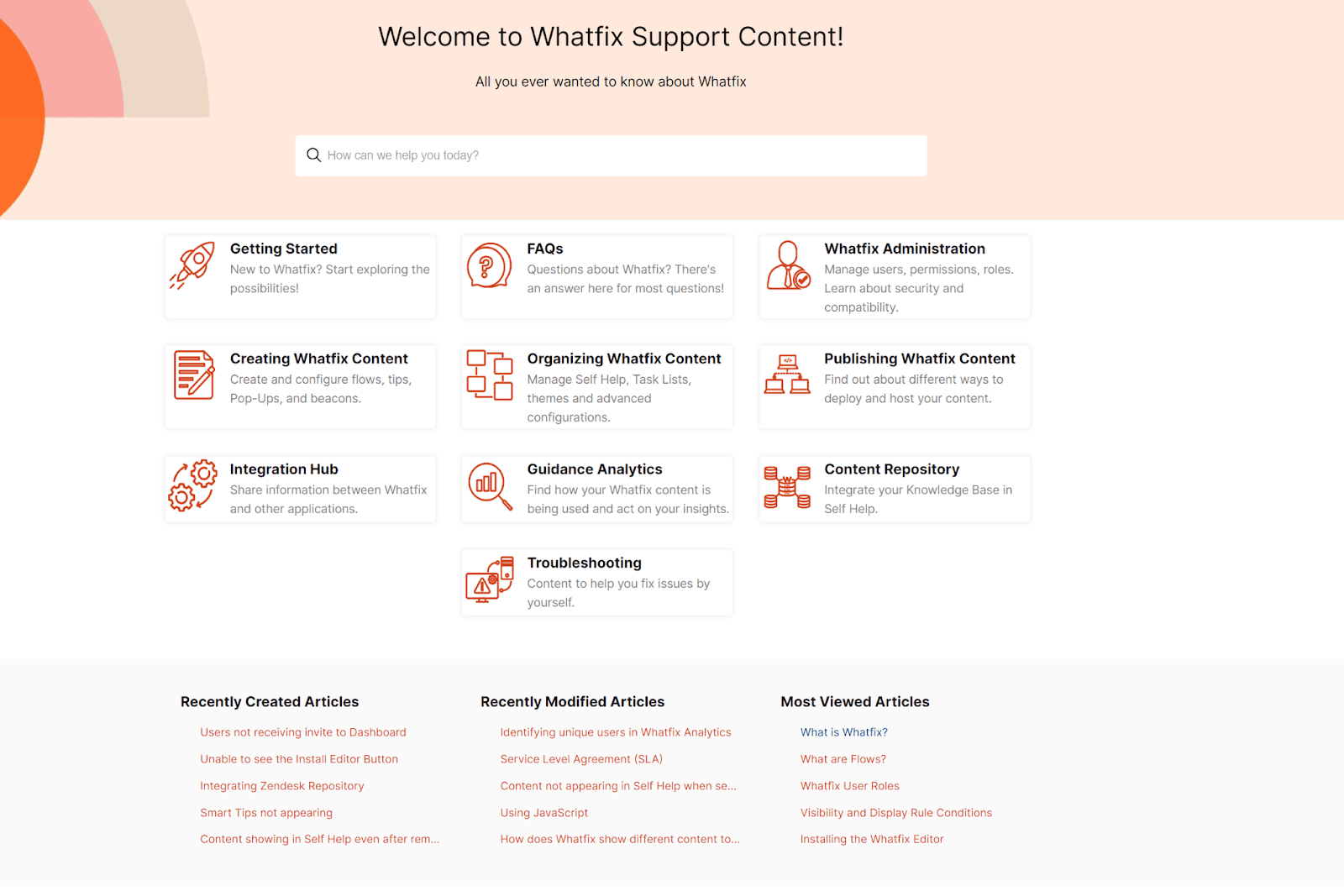
Source: support.whatfix
The articles in the knowledge base are packed with diagrams, screenshots, pictures, and even video materials to adequately explain to users how to implement the software and use it successfully.
For example, here’s a fun diagram that takes a new user through the entire process of signing up and first use.
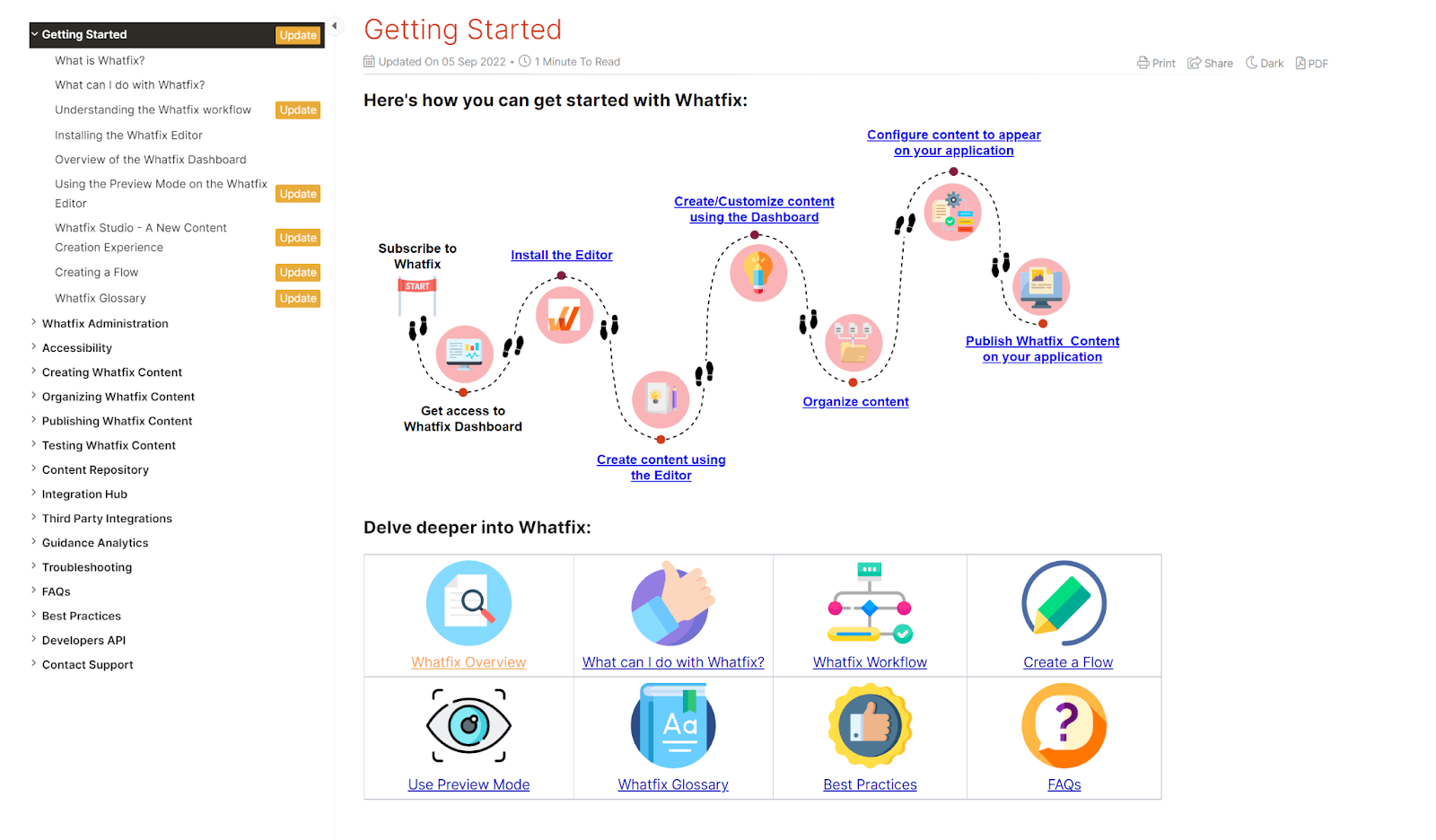
Source: support.whatfix
Resources like these can be more efficient in helping users understand and remember even the most complex procedures, and Whatfix takes full advantage of this fact.
And as if that’s not enough, Whatfix also provides orientation videos to support their instructions and add an additional layer of content for users.
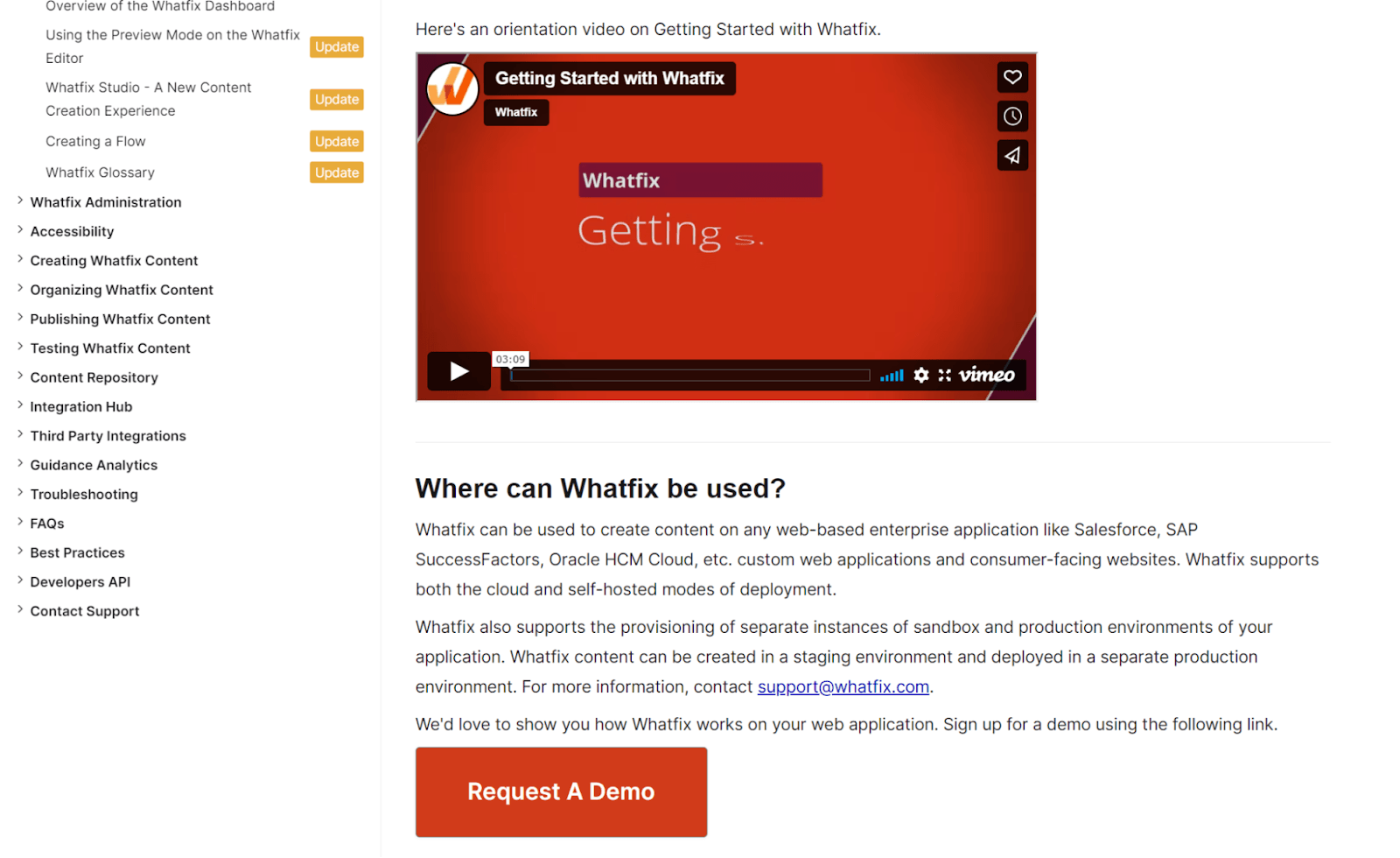
Source: support.whatfix
Video materials present information in a way that’s much more digestible than just plain text because they show, rather than simply tell users what to do.
Since Whatfix is a digital adoption platform that aims to simplify all kinds of digital experiences, it’s hardly surprising that its user documentation is outstandingly interactive, diverse, and multi-format.
YouTube Help
Last but not least, let’s look at the user documentation provided by the famous video platform YouTube.
Like most other knowledge bases in this article, the landing page here is simple and draws attention to the search bar where users can easily enter their query and be transported to the right article.
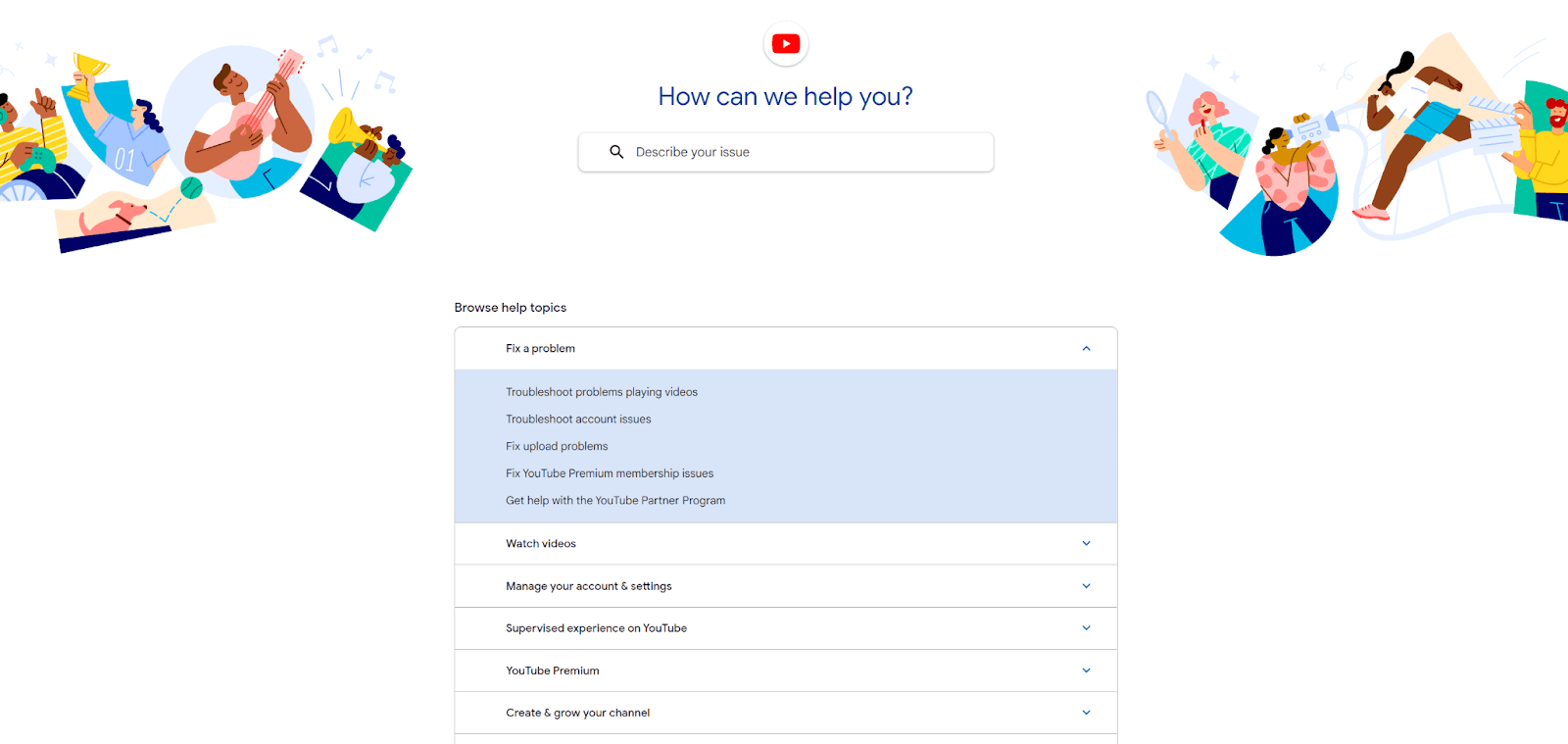
Source: support.google
Right under it, you’ll also find a selection of help topics that provide the answers to the questions and issues users often have when using YouTube.
One thing that stands out here is the “Ask the Community Experts” feature.
This part of the platform connects users who can’t find answers to their questions to experts who can help them resolve their issues.
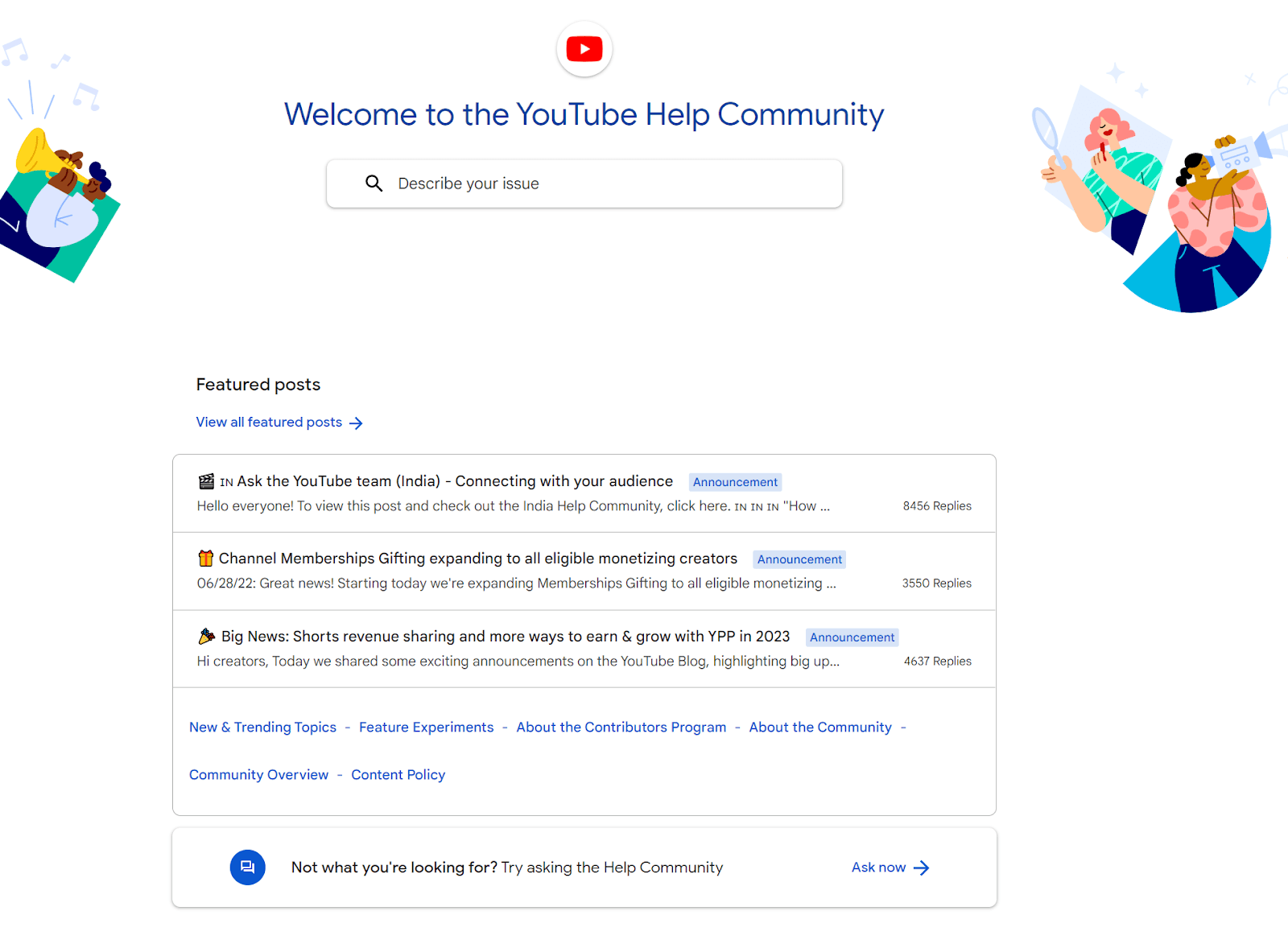
Source: support.google
When accessing this part of the user documentation, visitors have the option to browse previous user inquiries to see if another user has had the same problem they’re experiencing.
If the question hasn’t been answered yet, the other option is to create a post and ask the community for assistance.
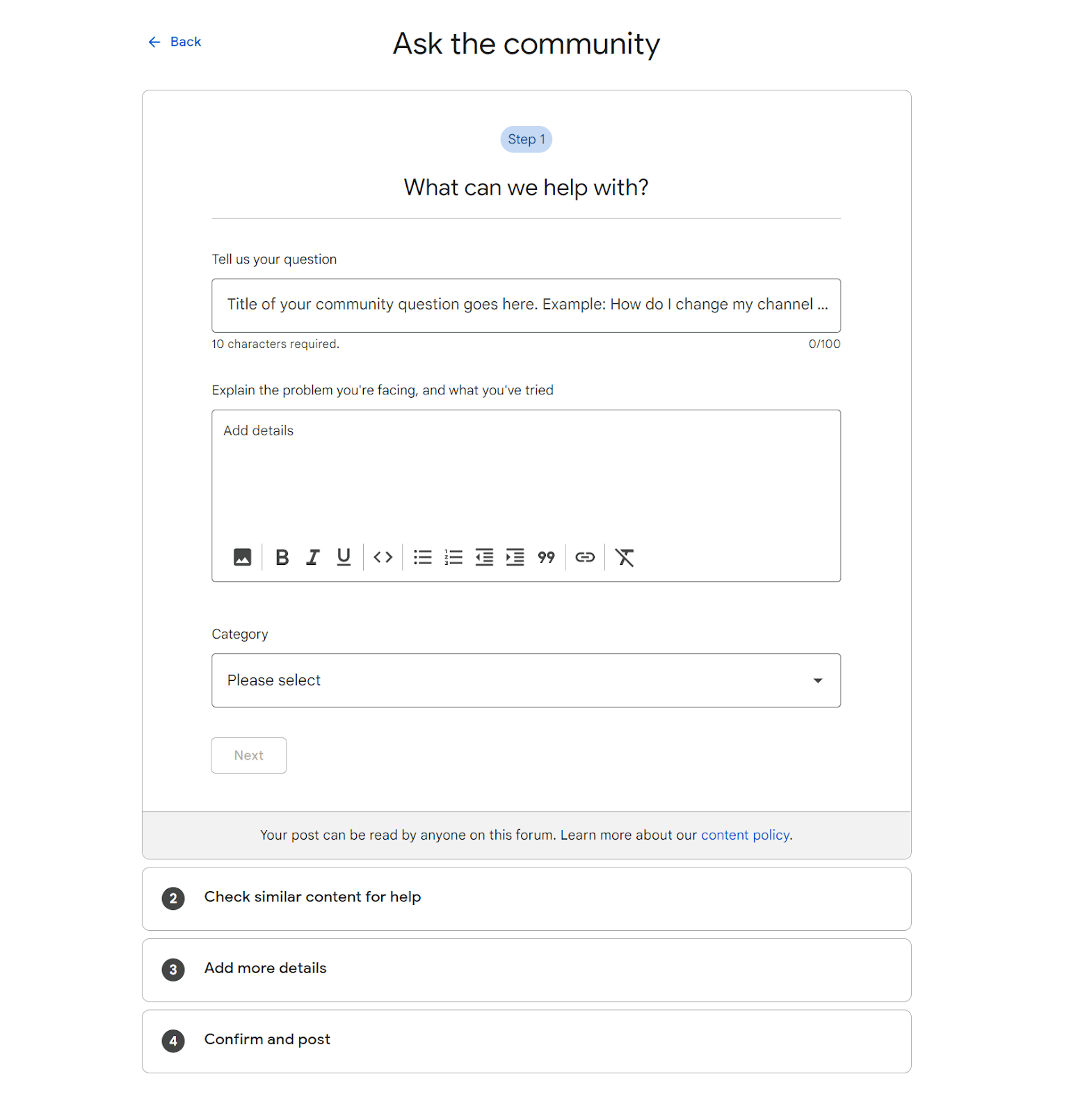
Source: support.google
Of course, this help method isn’t instant, it may take some time for the user to get a reply to their post, but this is another excellent example of how users can help you generate content that can enrich and complete your user documentation.
Conclusion
Now that you’ve examined some of the most accomplished examples of user documentation out there, you might be noticing some patterns emerging.
Great SaaS user documentation usually features a prominent search bar, as well as a navigational menu with categories or topics so that users can find what they need quickly and efficiently.
Some examples we mentioned go above and beyond with multiple formats and user-generated content to ensure every question gets answered in a way that’s easy for users to understand and apply to their own usage of the software.
As you’re building your own documentation, revisit these examples to pick up some good practices and consider investing in quality documentation software, such as Archbee, which will enable you to build stunning user documentation that’s helpful and easy to navigate.
Frequently Asked Questions
Strong user documentation gives customers instant, self-serve answers, which reduces support tickets and costs while speeding up onboarding and adoption. It’s available 24/7, delivers consistent guidance, and helps users discover features they might have missed—leading to higher satisfaction and lower churn. Well-structured docs also pull double duty for marketing and sales by attracting search traffic, showcasing how the product works, and building trust with prospects. In short, great docs improve customer experience, efficiency, and growth.



